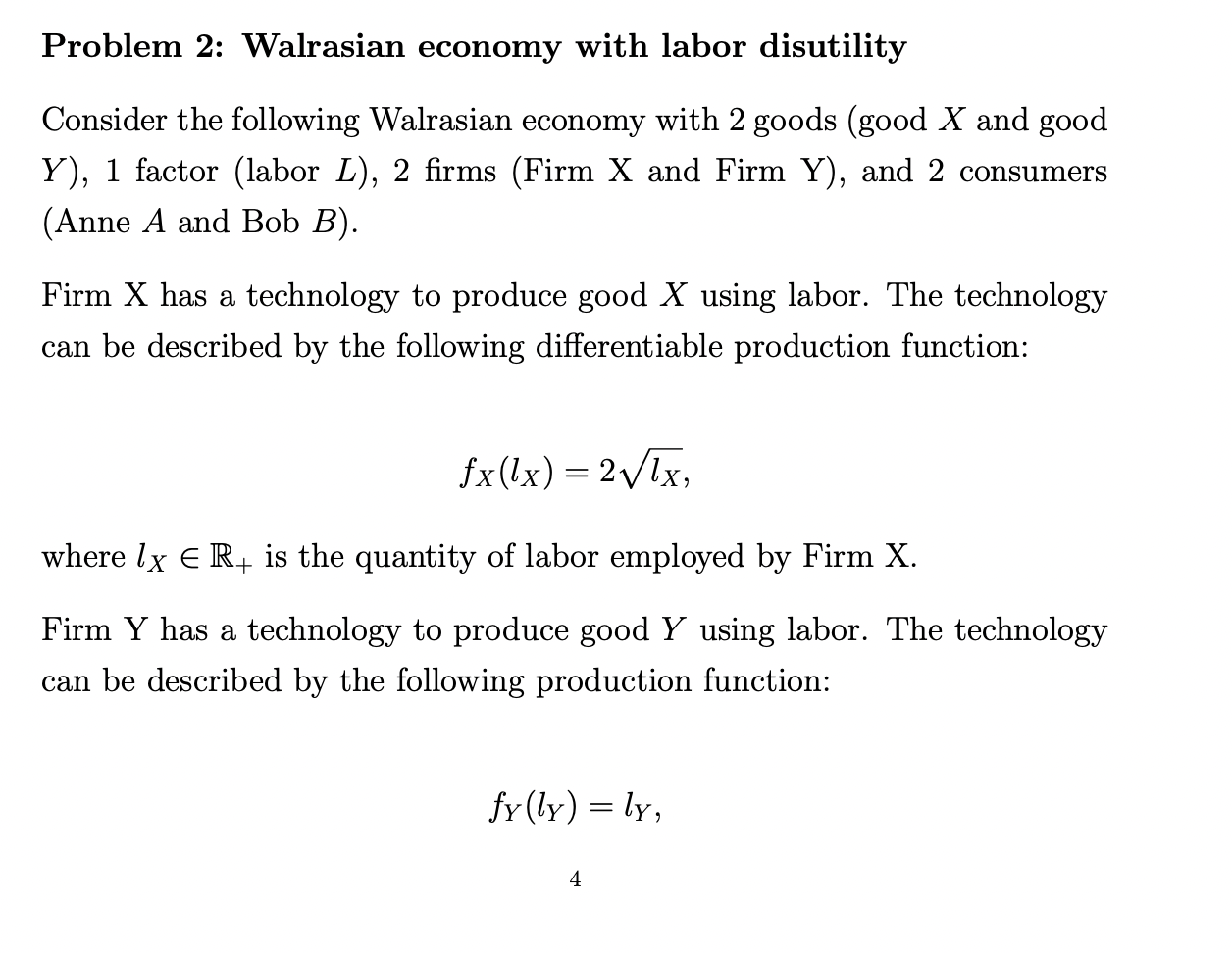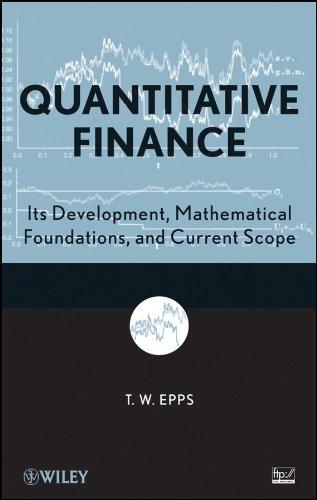

Problem 2: Walrasian economy with labor disutility Consider the following Walrasian economy with 2 goods (good X and good Y ), 1 factor (labor L ), 2 firms (Firm X and Firm Y), and 2 consumers (Anne A and Bob B ). Firm X has a technology to produce good X using labor. The technology can be described by the following differentiable production function: fX(lX)=2lX, where lXR+is the quantity of labor employed by Firm X. Firm Y has a technology to produce good Y using labor. The technology can be described by the following production function: fY(lY)=lY where lYR+is the quantity of labor employed by Firm Y. Bob has no initial endowments of labor or goods but owns 100% of both firms. Bob has a preference relation over consumption bundles that can be represented by the following differentiable, strictly quasi-concave utility function: uB(xB,yB)=xByB where (xB,yB)R+2 are the quantities of good X(xB) and good Y(yB) consumed by Bob. Anne has no endowment of goods but has an unlimited endowment of labor (i.e., her labor endowment is infinite). However, Anne dislikes working. In particular, Anne's preferences can be described by the following differentiable utility function: uA(xA,yA)=xAyA21lA2 where xAR+is the quantity of good X consumed by Anne, yAR+is the quantity of good Y consumed by Anne, and lAR+is the quantity of labor supplied by Anne. This economy has a unique competitive equilibrium. Normalizing the price of good Y to 1 , find the competitive equilibrium prices and allocations. Make sure you show your derivations. Problem 2: Walrasian economy with labor disutility Consider the following Walrasian economy with 2 goods (good X and good Y ), 1 factor (labor L ), 2 firms (Firm X and Firm Y), and 2 consumers (Anne A and Bob B ). Firm X has a technology to produce good X using labor. The technology can be described by the following differentiable production function: fX(lX)=2lX, where lXR+is the quantity of labor employed by Firm X. Firm Y has a technology to produce good Y using labor. The technology can be described by the following production function: fY(lY)=lY where lYR+is the quantity of labor employed by Firm Y. Bob has no initial endowments of labor or goods but owns 100% of both firms. Bob has a preference relation over consumption bundles that can be represented by the following differentiable, strictly quasi-concave utility function: uB(xB,yB)=xByB where (xB,yB)R+2 are the quantities of good X(xB) and good Y(yB) consumed by Bob. Anne has no endowment of goods but has an unlimited endowment of labor (i.e., her labor endowment is infinite). However, Anne dislikes working. In particular, Anne's preferences can be described by the following differentiable utility function: uA(xA,yA)=xAyA21lA2 where xAR+is the quantity of good X consumed by Anne, yAR+is the quantity of good Y consumed by Anne, and lAR+is the quantity of labor supplied by Anne. This economy has a unique competitive equilibrium. Normalizing the price of good Y to 1 , find the competitive equilibrium prices and allocations. Make sure you show your derivations








